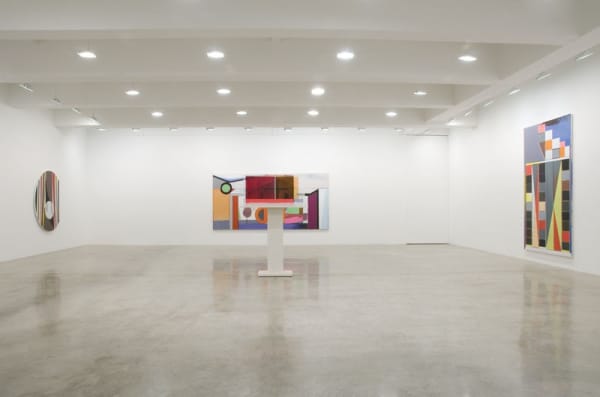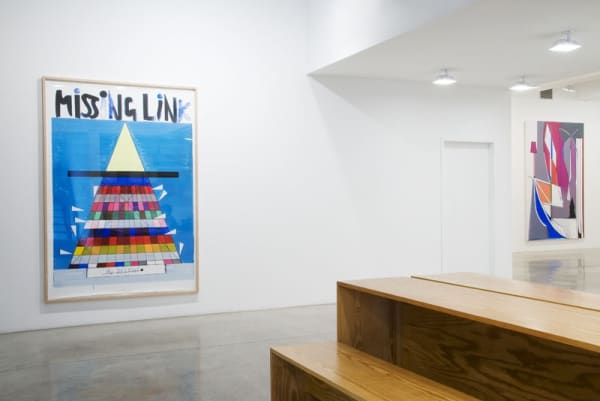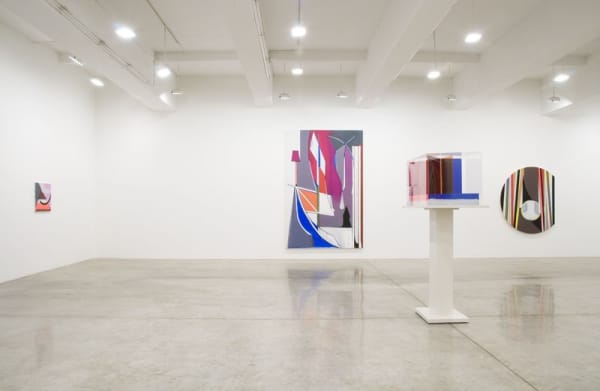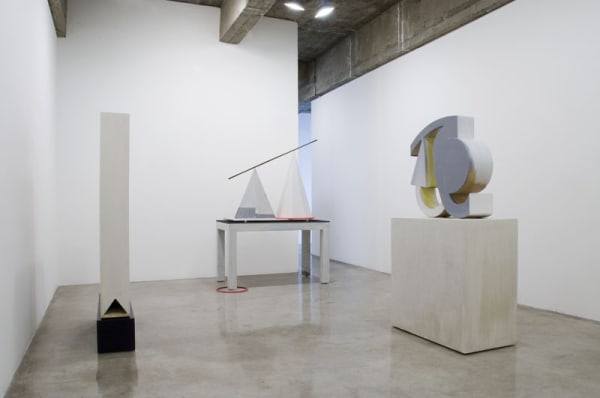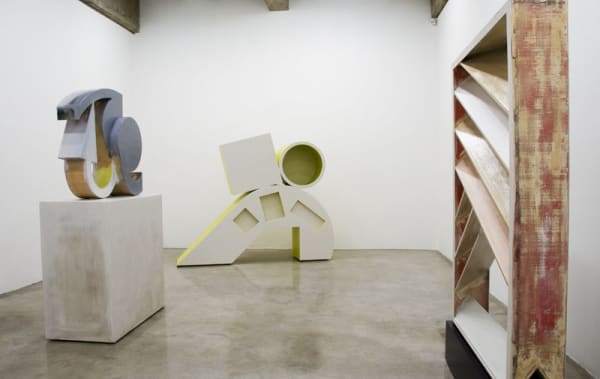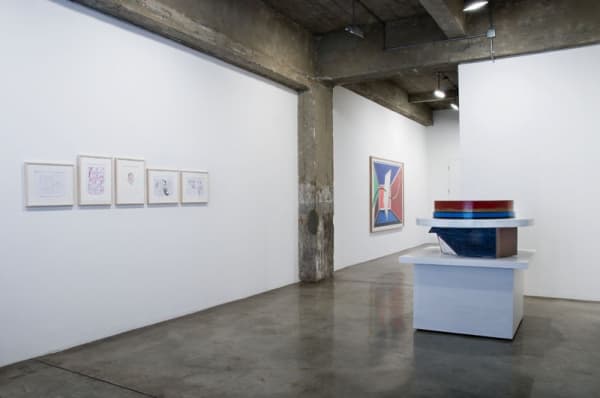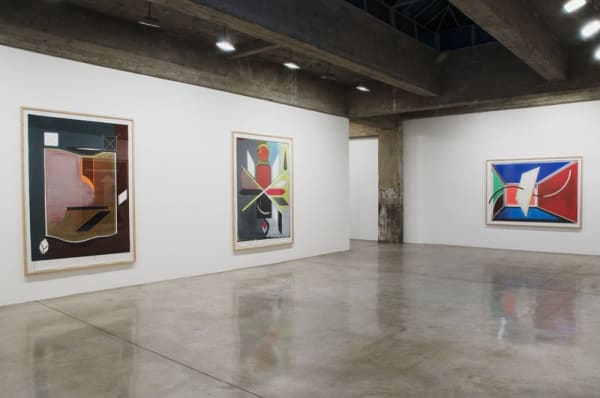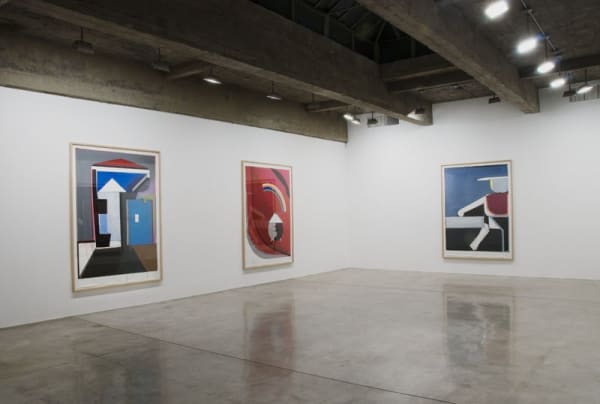Tanya Bonakdar Gallery is delighted to present, Missing Link in Delphi, an exhibition of new painting, sculpture and works on paper by Thomas Scheibitz. For his sixth solo presentation with the gallery, Scheibitz creates dynamic and precise works of layered form and color in two and three dimensions that continue his ongoing exploration of the boundaries between abstraction and figuration. While centrally concerned with principles of classification and systems of order, Scheibitz’s work resists traditional categorization itself, instead simultaneously collapsing and expanding conventional definitions and opening up new sculptural and painterly territory.
In the contrasting layers of bold and murky colors that slice his canvases, and the pleated folds of his sculptures, Scheibitz references images drawn from our collective visual culture and distilled down to their most elemental formal properties. Through these allusions, Scheibitz explores notions of perception and challenges our facilities and limitations in deciphering given information and the wider world around us. Recognition does come in flashes—arrows, curtains, screens, and letters appear in the works—but what these recognizable elements signify is intentionally open and unclear. The fleeting glimpses of meaning disappear almost as soon as they arrive, to be replaced with a more literal and authentic experience of visual form as the delicate intersection of texture, shape and color. This slippage between symbol and significance is fertile ground for Scheibitz and this generative uncertainty exists in each work, provoking and stimulating the viewer.
Formal concerns are equally important in dictating meaning, and color plays an especially important role as a material. Scheibitz’s use of color is substantive; his layers of hues create planes of space and depths of field in his paintings in a manner that is both art-historically traditional and utterly new. This is true of his sculpture as well—Scheibitz deliberately emphasizes the parity between his sculpture and painting, and considers them partners in his practice, seeing each medium as both an extension and representation of the other.
Scheibitz’s non-heirarchical approach to dimensionality is indicative of his interest in exploring how space is understood. In past bodies of work cartographic plans, diagrams and methods of representing landscapes have been of great importance. The title of the current exhibition, Missing Link in Delphi, continues this investigation by referencing Delphi, a city that in Greek mythology was seen as the seat of the world and the center of the universe. Referencing a specific geographic location, particularly one of such classical importance, orients the viewer to the work, which becomes a kind of landscape in itself, with paintings as vistas and sculpture as topography. The combination of this reference to Delphi, with the term “missing link,” which refers to Darwin’s theory of evolution and the “transitional forms” of life between one evolutionary phase and the next, explores and combines dueling spiritual and scientific perspectives. The title of the show, and of each piece, adds a linguistic layer to Scheibitz’s formal and compositional system.
Living and working in Berlin, Thomas Scheibitz represented Germany at the 51st Venice Biennale in 2005. Other major solo shows include: Thomas Scheibitz: about 90 Elements/TOD IM DSCHUNGEL, The Irish Museum of Modern Art, Dublin; Camden Art Centre, London; Musée d’Art Moderne Grand-Duc Jean, Luxembourg, 2007-2008; ABC - I II III, Centre d'Art Contemporain, Geneva, 2004; Bannister Diamond, Stedelijk Museum, Amsterdam, 2001; Ansicht und Plan von Toledo, Kunstmuseum Winterthur, 2001; Museum der Bildenden Künste, Leipzig, 2001; Matrix i95, 1-geometrica B, UC Berkeley Art Museum, 2001; and Thomas Scheibitz: Low Sweetie, Institute of Contemporary Art, London, 1999.
All installation images above: Photo by Jean Vong
